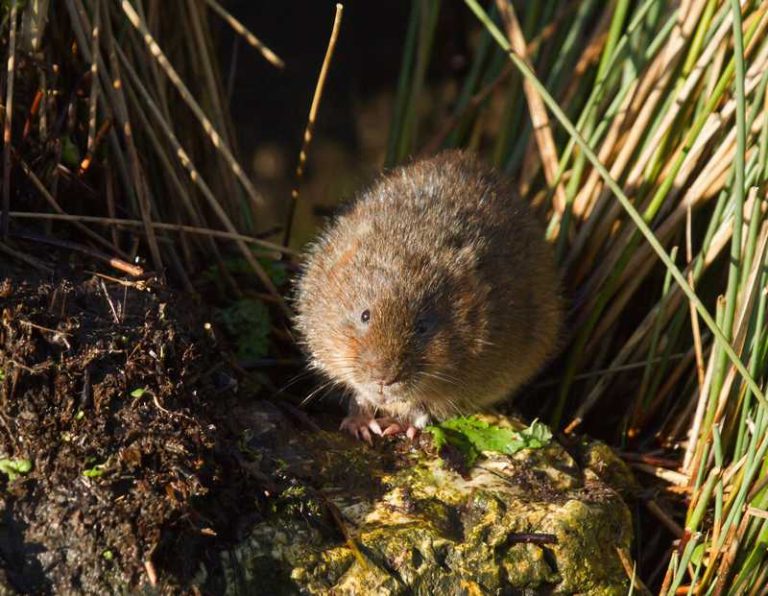
Also called the mole rat , the ground vole ( Arvicola terrestris ) can do a lot of damage to the garden, among perennials, root vegetables or even fruit trees. Get to know this rodent better and discover all the ways to get rid of it .
Vole Identity Card
With its short legs, massive appearance and small ears, the vole , also called a mole rat , resembles a mouse. But his coat is brown and turns yellow on the belly. 12 to 24 cm long, it has a tail of 7 to 10 cm for a weight of approximately 80 g to 300 g.
How do voles live?
Mole rats live mainly underground where they dig a network of galleries several meters long and up to 30 or 40 cm deep.
To evacuate the earth, they leave a few mounds that indicate their presence. The latter are often difficult to distinguish from those of moles .
The vole lives in family:
- Some cavities are used as a nest, for birthing or resting.
- Others in the toilet.
- Finally, others are used as rooms for storing food.
A small herbivore that causes great damage
The land vole is herbivorous . It appreciates all kinds of seeds, tubers, fleshy roots, or even stems. It is active from dusk until early morning.
In the garden, it causes a lot of damage by eating the roots of perennial flowers, bulbs, ornamental trees, fruit trees, and root vegetables in the vegetable patch.
In agriculture, it is also considered a major pest in alfalfa and rapeseed fields in the spring.
Lifespan and Reproduction
If all the living conditions (climate, food) are met, the female mole rat can have up to 5 litters per year between April and October. Each has between 1 and 10 cubs.
Even if their life expectancy is short (Between 3 and 6 months), the families are often very numerous and their rapid proliferation.
Only very cold winters or heavy rains that drown the burrows naturally limit populations.

How to get rid of mole rats and voles?
There are many ways to hunt voles . Only one is to be avoided , rat poison , because they are also dangerous for wild and domestic animals.
natural predators
In nature, the vole’s most formidable enemies are small wild carnivores such as weasels, weasels, martens, foxes or ermine. It is necessary to favor the presence of these animals in order to avoid the proliferation.
Nocturnal birds of prey are also among its main enemies, especially the owl. You can also count on a few diurnal birds of prey such as the harrier or the kestrel.
In the garden, the hedgehog and the grass snake also occasionally eat individuals.
The cat, formidable against voles
In a garden or in the city, an alley cat or a pedigree cat with a playful temperament is very effective in hunting voles and keeping a rodent population at an acceptable level.
Let him out often, he will catch and bring back an incredible number of voles and field mice.
The mechanical traps
Sash traps are the most effective way to get rid of these invisible pests. They alight at the entrance to burrows as for trapping moles . In order to increase their effectiveness, it is important to wear gloves because the vole should not smell the smell of humans.
You can also set up classic mousetraps baited with a small piece of stale bread spread with lard.
How to bait a vole?
Some baits , which are very easy to make, work very well in winter. For example, you can mix wheat and soft plaster. Once placed at the entrance to the gallery, the vole will ingest this mixture. After ingestion, the plaster hardens and the animal is eliminated .
Repellent plants for mole rats
As curious as it may seem, there are plants to use to keep moles and voles away : Imperial Fritillary, euphorbia spurge, carob or castor, for example.
A tip to protect new plantations
To protect the roots of shrubs and newly planted fruit trees, you can line the bottom and sides of the planting hole with fine-mesh chicken wire.
This barrier is also very effective in protecting the fleshy bulbs of tulips, onions or root vegetables.
